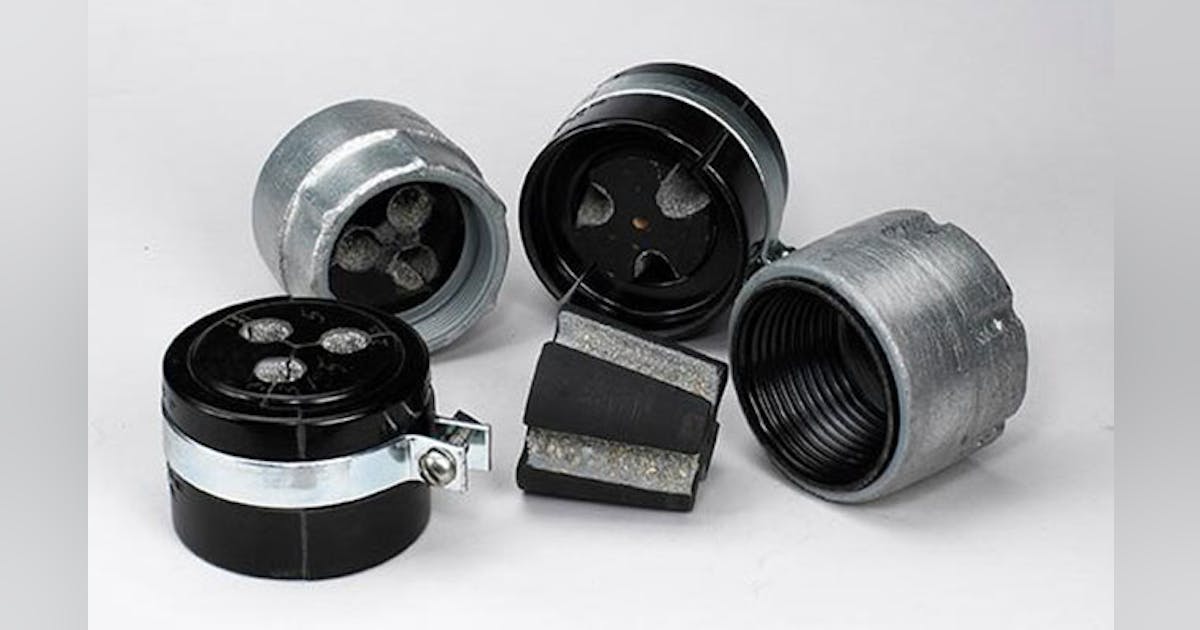WiresMakeMeNuts
Member
- Location
- Virginia
- Occupation
- Electrical Contractor
This is my first post on ANY forum, EVER, but I have often lurked on this forum and others to help research code issues, etc. So thank you for the wealth of knowledge that I've gleaned over the years. I apologize in advance if I am not following the protocols...
A little background: I am an electrical contractor. The subject project is currently being designed and I am intimately involved from a constructability perspective, but will also likely be responsible for building the project after the design is complete.
This project will have a vertical raceway embedded in concrete for 250-300'. Naturally, the conductors in this raceway will need to be supported per 300.19 at the intervals in table 300.19 (A). The conductors are branch circuits, likely #12 to #4 in size (still under design...). Believe it or not, but I have essentially the same problem on another very similar project...
I haven't run into this before, but 300.19 (C) offers four options to support the conductors. I don't think options (1), (2), or (3) will work, since there is no access to the conduit for the entire run, being that it is embedded in concrete. We've considered relocating the conduit so that it is exposed or installing embedded junction boxes, but that is not ideal from my perspective or the client's, for a variety of reasons.
This leaves option (4) under 300.19(C)(4) "Other Approved Means." .
.
I can't imagine that I am the first person to run into this problem, but I am struggling to find a product or solution for this. The best thing I've come up with is installing a messenger cable in the conduit and supporting the conductors on the messenger (or maybe some type of tri/quatraplexed cable). I don't see anything in Article 396 precluding this, but messenger supported cable is typically horizontal and not in conduit...
So here are my questions:
1. Are there manufactured solutions/products out there that would solve this problem? That would be my preferred solution...
2. Has anyone ran into this before and what was the solution?
3. Does anyone have any experience using a messenger supported or tri/quadraplexed cable in vertical conduit as I explained above? If so, would that work in this application? What did you use to attached the cable to the messenger as I'm not sure typical lashing will work?
A little background: I am an electrical contractor. The subject project is currently being designed and I am intimately involved from a constructability perspective, but will also likely be responsible for building the project after the design is complete.
This project will have a vertical raceway embedded in concrete for 250-300'. Naturally, the conductors in this raceway will need to be supported per 300.19 at the intervals in table 300.19 (A). The conductors are branch circuits, likely #12 to #4 in size (still under design...). Believe it or not, but I have essentially the same problem on another very similar project...
I haven't run into this before, but 300.19 (C) offers four options to support the conductors. I don't think options (1), (2), or (3) will work, since there is no access to the conduit for the entire run, being that it is embedded in concrete. We've considered relocating the conduit so that it is exposed or installing embedded junction boxes, but that is not ideal from my perspective or the client's, for a variety of reasons.
This leaves option (4) under 300.19(C)(4) "Other Approved Means."
I can't imagine that I am the first person to run into this problem, but I am struggling to find a product or solution for this. The best thing I've come up with is installing a messenger cable in the conduit and supporting the conductors on the messenger (or maybe some type of tri/quatraplexed cable). I don't see anything in Article 396 precluding this, but messenger supported cable is typically horizontal and not in conduit...
So here are my questions:
1. Are there manufactured solutions/products out there that would solve this problem? That would be my preferred solution...
2. Has anyone ran into this before and what was the solution?
3. Does anyone have any experience using a messenger supported or tri/quadraplexed cable in vertical conduit as I explained above? If so, would that work in this application? What did you use to attached the cable to the messenger as I'm not sure typical lashing will work?


